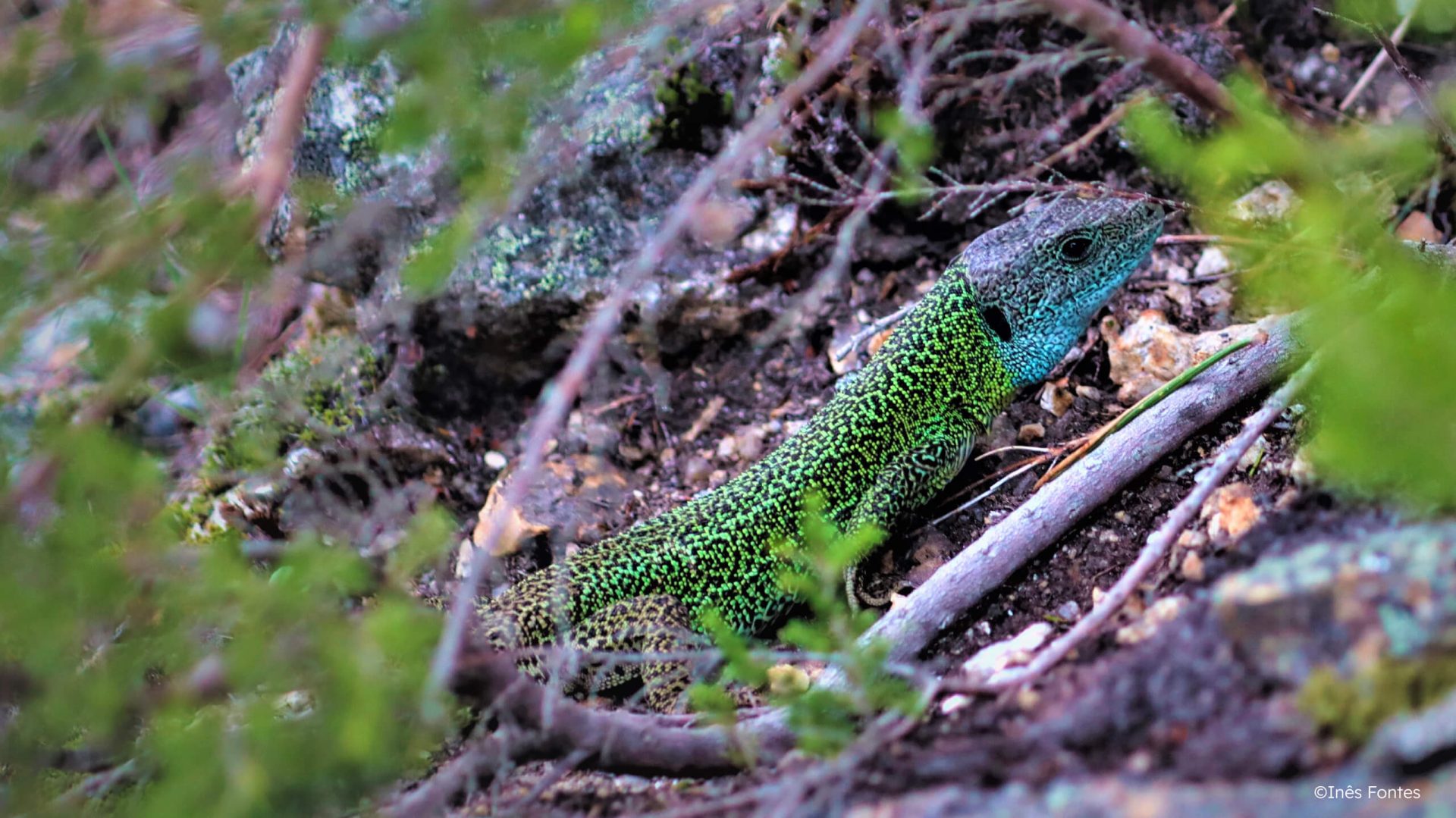The emerald lizard, or Lacerta schreiberi, is a reptile species endemic to the Iberian Peninsula and can be found in several locations in Portugal, from Minho to the region of Leiria and Abrantes. This area is complemented by several populations scattered throughout the territory, thus making them more vulnerable to extinction, such as Sintra and several locations south of the Tagus River, such as Cercal, Odemira and Monchique.
This species can be found most on the north and centre of Portugal, including in some protected landscape areas, such as Serra do Açor mountain, where more than ten reptile species protected by the Berne Convention currently live. This area of vast natural value is part of the European network of biogenetic reserves and is well worth a visit.
The emerald lizard, which in Portuguese is referred to as a water lizard, can be found mainly on the banks of vegetation-protected waterlines of markedly Atlantic characteristics, whether in mountain valleys, next to woods with clearings or in lowland swamp areas. Water quality is a prerequisite for its survival.
Although globally considered “near threatened, this species is rated as “little concern” in Portugal regarding protection. Many consider it one of the most beautiful reptiles in Portugal due to the turquoise colour covering the throat of males during the mating season and which extends to the head. In winter, that colour fades, but the lettuce green and yellow tones with dark patches on its back complement the coloured spectrum.
Unfortunately, as with many endemic species, the water lizard faces several challenges, such as the destruction of natural habitat resulting from human activities, water pollution and the introduction of invasive species. Hence the need to raise the population’s awareness on the importance of protecting and preserving this species to ensure its survival and to maintain biodiversity and ecosystem health.





